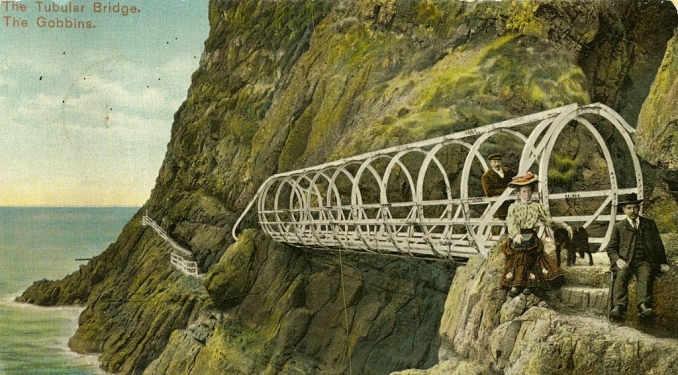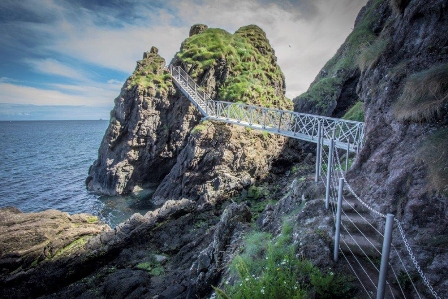The Gobbins, a spectacular Irish cliff path that refuses to be beaten by the storms
The Gobbins is a cliff-face path at Islandmagee (Oileán Mhic Aodha), County Antrim, (Contae Aontroma) in the northeast of Ireland. It is on the Causeway Coastal Route, a driving route from Belfast (Béal Feirste) to Derry (Doire). On the way the Route gives you an opportunity to visit a number of glens and stretches of spectacular coastline. The name Gobbins is derived from the Irish word Gobán meaning "point of land" or "headland". The Gobbins path takes your alongside the rocky cliff edge, across bridges, caves and through a tunnel for just over 1.2 mile (1.9km). A walk that has been described by some as not for the faint-hearted, with waves crashing against the rocks below.
Originally designed by Irish engineer Berkeley Deane Wise (2 October 1855 – 5 May 1909), the Gobbins path was first opened to the public in 1902. It was very popular with tourists but required constant maintenance to cope with the impact of waves and storms. It closed for a period in the 1930's and the ability to provide the required maintenance was not possible during the period of the second world war. Although opened after the war for a period, by the mid 1950's it had to be closed again. Following a £7.5m investment the path was opened again in 2015, although it has had to be closed twice since that time due to storm damage and rock falls.
Nevertheless, there is a determination to keep the pathway opened to the public and it is clear to see why. Because with its dramatic scenery and wildlife there is nowhere quite like it in the world. With new bridges, pathways and increased safety measures walking tours have again started from Saturday 28th April and will run until to Wednesday 31st October. The tour takes approximately 2.5 to 3 hours and starts every 30 minutes. Groups are kept to a maximum of 15 people, so places may be limited at certain times. More information can be obtained from The Gobbins Cliff Path website.







